Managing lowland watercourses in a drought
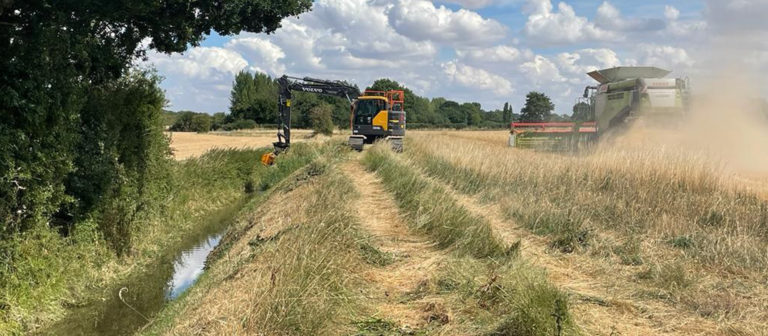
In 2022 we have already seen temperature records broken, with the driest July in England since 1935, and a further heatwave in August. There has been little in the way of rainfall for large parts of England since early June, a National Drought Group has been convened, and attention is rightly turning to the impact on our watercourses, aquatic wildlife, and water resources.
Given their role in managing water levels across approximately one tenth of England, internal drainage boards (IDBs) have a key part to play during times of drought, particularly in the drier, flatter, east of the country. They operate and maintain over 500 pumping stations and 22,000 kilometres of watercourse and numerous sluices, weirs and other water control structures that are both critical to reducing flood risk, but also retaining water in drier weather.
They aim to manage hydraulic catchments as a whole to provide water availability throughout the year for land managers, communities, and the environment, whilst meeting their statutory obligations. During drier periods IDBs undertake heightened surveillance to manage water within their catchments; coordinating with landowners, professional partners and other stakeholders, to control water levels. IDBs are not regulators of the use of that water, a role which is played by the Environment Agency.
In this article ADA takes a look at some of the steps IDBs are taking this summer to preserve as much water as possible in the watercourse systems that they manage across lowland England. Their work to retain water this summer, given the impacts of the prolonged dry weather period we are experiencing, is not only critical to agricultural productivity, but also to the health of the aquatic environment in their districts.
Water levels
IDBs seek to optimise the use of their watercourse network, water control structures and pumps to maintain higher water levels and optimise water resources throughout the drought period. They aim to prioritise water to mitigate environmental harm, including short term impacts to statutory sites and habitats of principal importance to safeguard protected flora and fauna.
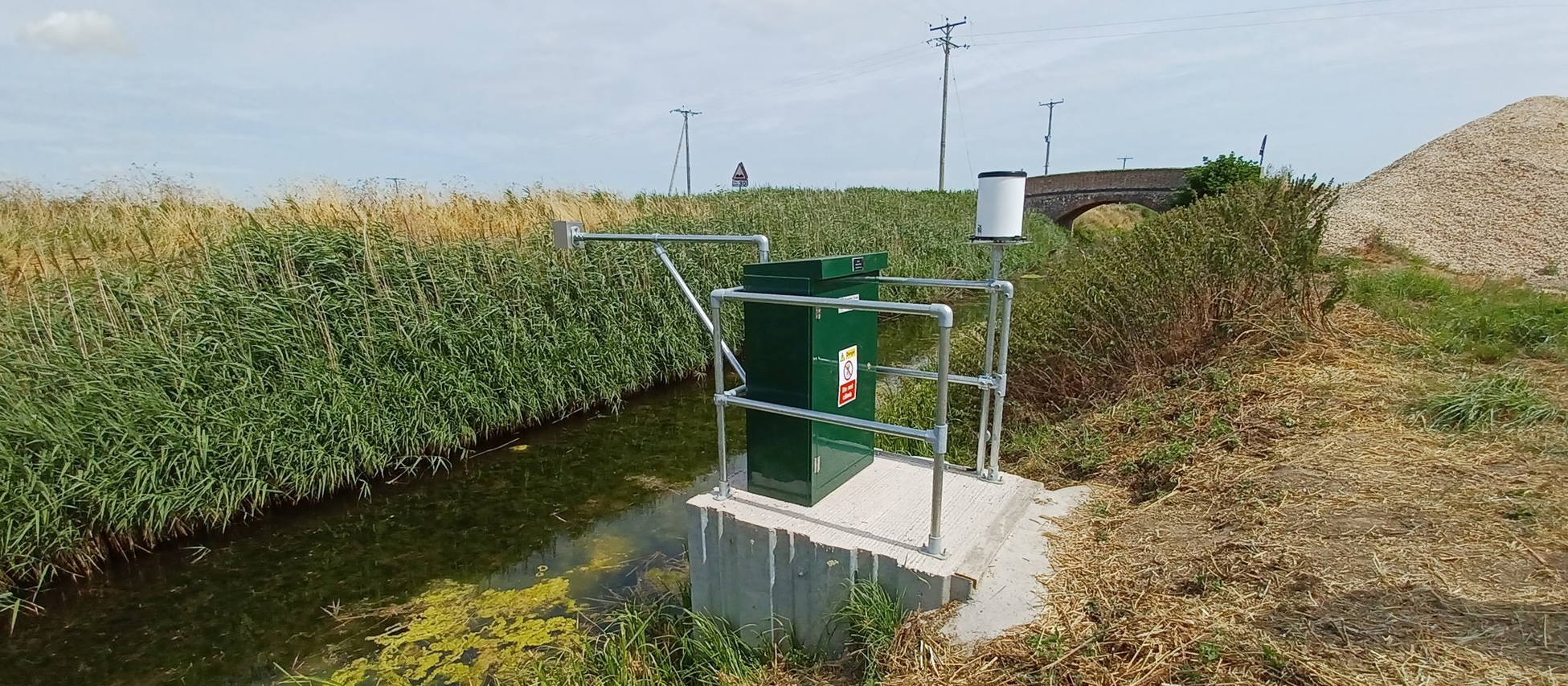
IDBs closely monitor water levels and rainfall within their drainage districts. To do this they utilise telemetry systems that check on levels not only at pumping stations and outfalls, but also more remotely within their watercourse network to provide a more detailed and animated view of how water levels are changing. This data enables IDBs to alter inlets and water control structures accordingly to compensate during the irrigation season.
IDBs typically operate to different water levels in summer and winter months. They usually shift to retaining more water within their systems from March/April in anticipation of drier weather and the irrigation season. Groundwater levels are largely dependent on precipitation, and so rain is ultimately the best remedy for low groundwater levels. However, where weirs are used to control ditch levels these can be set higher to influence groundwater levels. Groundwater tends to migrate to the boundaries of fields and then seep into the ditch. By raising the water levels so that the ditches fill with water, this gives some back pressure and helps retain groundwater for longer.
Increasingly IDBs are making use of automated systems to do this work to enable more dynamic changes to be made in real time. Such systems can help monitor more sensitive sites, such as environmentally designated wetlands or ancient archaeological sites, which can both be damaged when groundwater levels recede. Smart systems will be critical to retaining more water for longer in our agriculturally productive lowlands due to our changing climate, whilst also being able to react quickly to intense rainfall events to prevent flooding.
Pumping
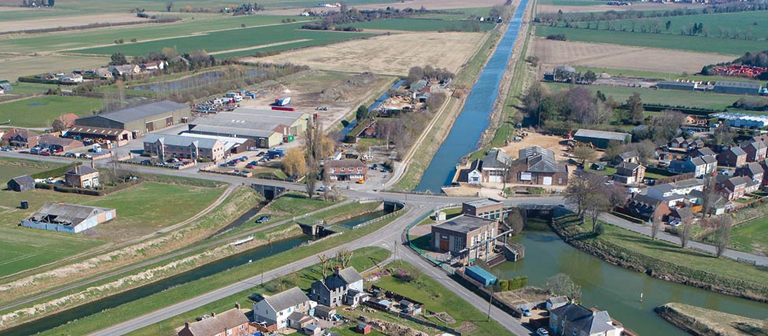
Broadly speaking, trigger levels for IDB’ pumping stations have been raised to their highest summer levels this year so that pumps will only operate in a storm event. Some pumps can be turned off where there are limited risks from sudden rises in levels, should there be any sudden localised storms or heavy rainfall events. Elsewhere some pumps are operating owing to seepage from adjacent main rivers and run-off from urban areas. Periodically pumping from IDB systems is still necessary during dry weather to help draw through fresher water and prevent systems from becoming stagnant with depleted oxygen levels.
Water quality and dissolved oxygen
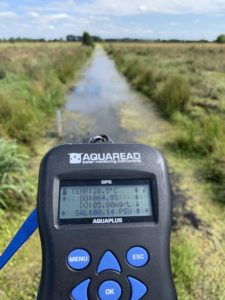
Due to the dry conditions it is important that water flows well in lowland channels. Low flows in watercourses can result in specific environmental incidents. Fish may become distressed or die due to low oxygen levels in channels.
The prevailing sunny warm weather has resulted in good growing conditions for ditch dwelling aquatic plants. Consequently, drainage boards are undertaking some targeted early mowing and weed clearing within channels to help water move around the lowland systems. This is chiefly where aquatic plant growth is creating blockages to freshwater flows and may be impacting dissolved oxygen levels.
Conversely, during heatwaves when temperatures are very high, IDBs are pausing in channel vegetation cutting and bank maintenance works in order to prevent these activities contributing to oxygen depletion. Handheld dissolved oxygen meters can enable operators to check water oxygen levels prior to, during, and following maintenance works.
Some IDBs have aerators running at several locations within their watercourse network, such as pumping stations, in an attempt to provide oxygenated refuges for fish in these high temperatures.
Inlets and main river feeds
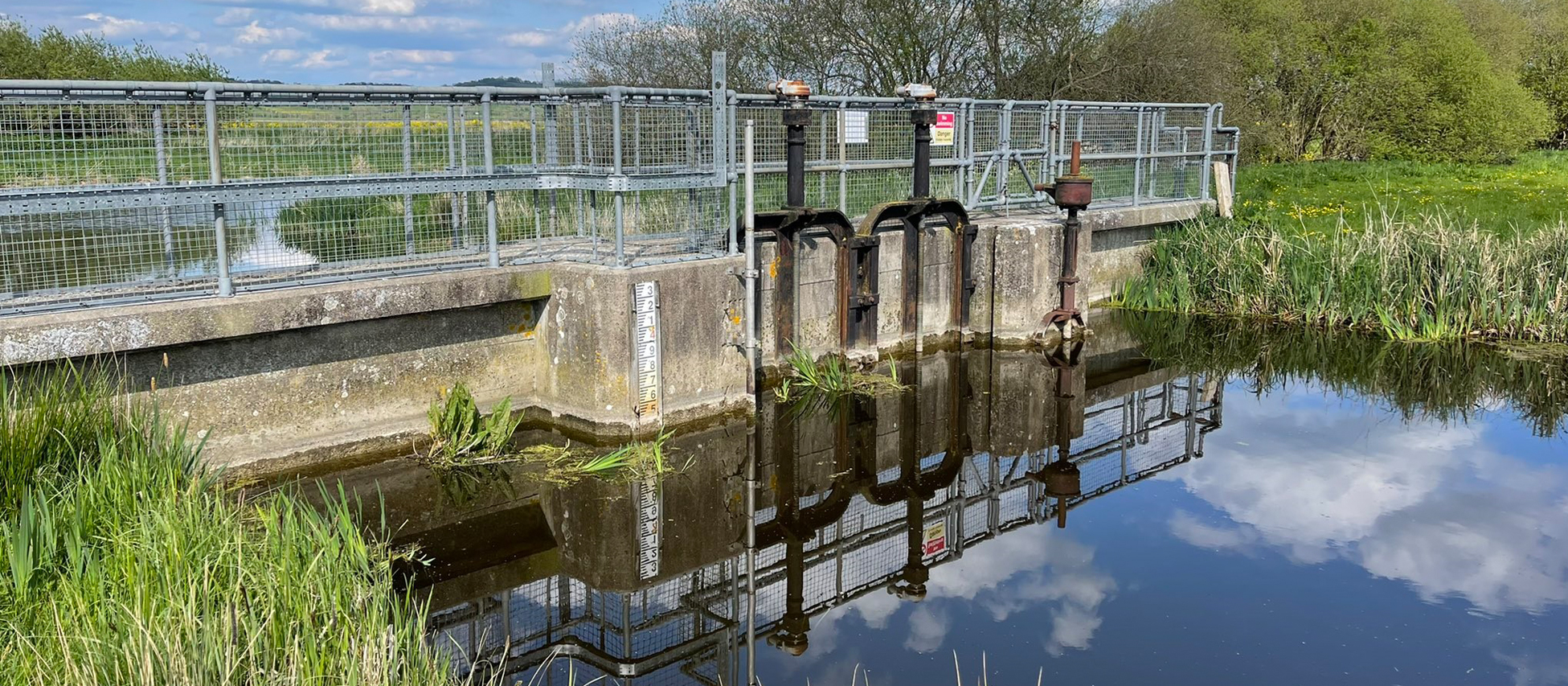
IDB officers are regularly checking feeds of freshwater into their lowland watercourses as well as their extensive network of water level retention structures (weirs, sluices, penstocks), removing any blockages to allow unrestricted flows.
IDBs in the Fens have reported effective communication with both the Environment Agency (EA) and Anglian Water throughout this summer, especially through coordinated irrigator groups, such as the Lower Nene Abstractors Group. Planning around drought and any necessary restrictions started in March and the dialogue stepped up as the situation has unfolded.
In the Fens, IDBs control a number of inlets that allow water to flow from adjacent main rivers into their drainage districts. These ensure that water is available for irrigation by local farmers and growers, as well as supporting the environmental health of lowland watercourses, and supplementing wetland areas, such as the Nene Washes, to ensure their ecological remit and SSSI status. Managing these feeds involves working closely with local EA officers to monitor river levels, in order to moderate the effect that inlets into drainage districts are having on main river levels.
One of the larger sensitive river systems with widespread irrigation activity that flows through a number of drainage districts is that of the Ely Ouse. Through the spring and into the summer, levels remained stable in this river complex. However, as levels continued to drop after voluntary irrigation restrictions came into force in July, local IDBs complied with a request from the EA to close their inlets, as the Ely Ouse had hit 1.45m AOD, the agreed trigger level. IDBs are still permitted to open their inlets during such period if they have concerns that an environmental incident could occur in one of their districts. Careful coordination of minimal action between the EA and IDBs has allowed the river to stabilise, and some inlets have been able to reopen, although it is likely further closures will continue to be necessary as we move through August.
Managing irrigation
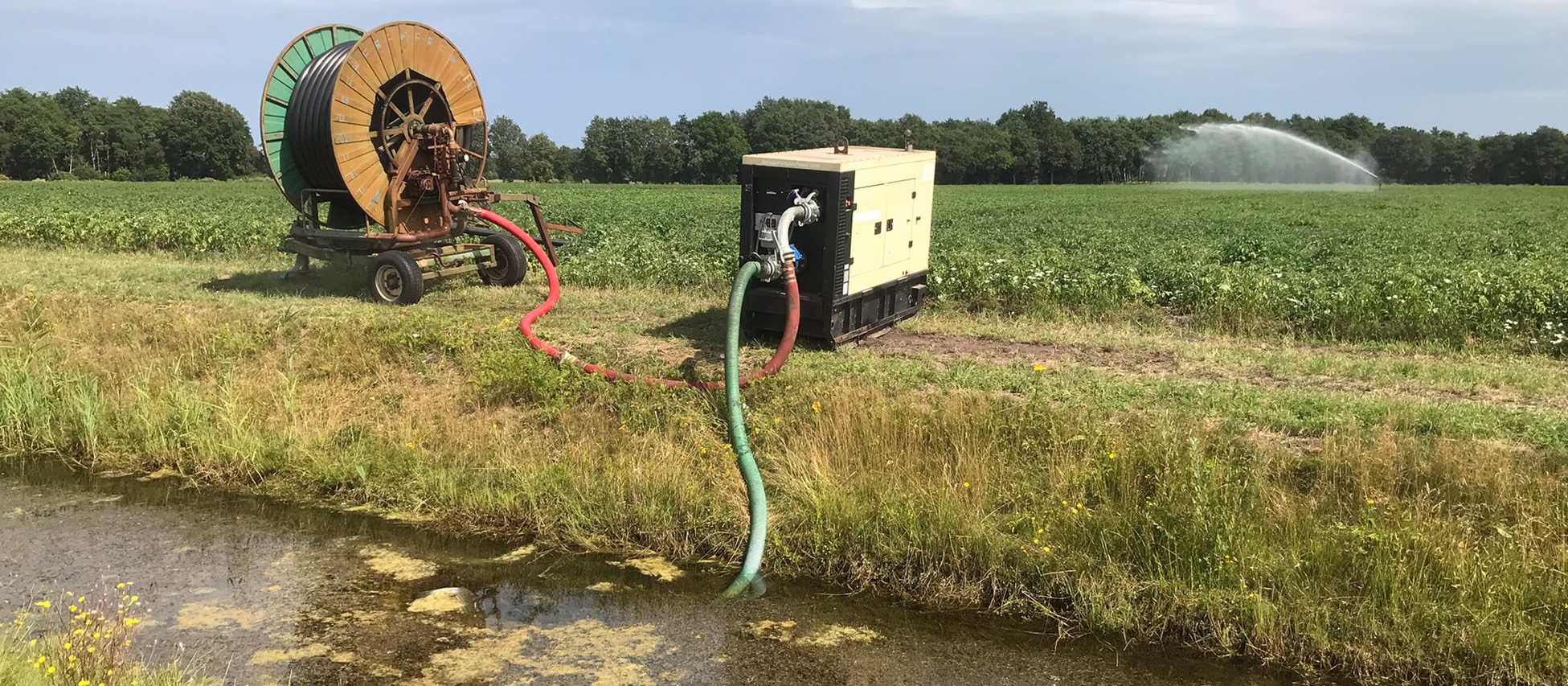
IDBs do not have a regulatory role in relation to irrigation and abstraction licencing, a role that sits with the EA in England. However, IDBs do play a critical role in communicating changes in water levels to both abstractors and the EA.
This information helps inform voluntary restrictions, such as only allowing night time irrigation and alternating abstraction days between users within an area. By self-restraining abstraction activities in this way, the limited water resources available in some drainage districts during summer months can be eked out and abstraction bans, or other regulatory activity, can be forestalled to the benefit of all growers within the area. This summer, these voluntary measures started to come into force in parts of the Fens in early July, being communicated to irrigators by the EA and IDBs. It should be noted that landowners with their own reservoirs have not had to follow these restrictions.
Such voluntary agreements are often longstanding, having been put in place many years ago by the predecessor body of the EA, IDBs, and landowners, to make the water last as long as possible. As they are voluntary, they are not enforceable by the EA, but they can be highly effective in preserving water resources with the mutual support and trust of the agricultural community.
In the area covered by the Middle Level Commissioners within the Cambridgeshire Fens, this extends to a text message information service that the Commissioners operate during peak times of water abstraction. The text messages relay information to IDB officers and inlet slacker (penstock) attendants about water availability and general level trends within the Middle Level Commissioners’ arterial system. The system works extremely well and is reliant upon close co-operation between regulators, IDBs, and irrigators.
It is important that a minority of irrigators who ignore these voluntary restrictions and continue to irrigate during the day, or at weekends during prolonged dry weather do not hinder the efforts of the majority of licence holders who follow them. Consequently, IDBs do have discussions with abstractors and the EA to check on irrigation activity in certain areas where levels are dropping off more quickly.
Future
Planning of catchments for flood risk management, but also to retain more water resources, will be critical in the future. Where we have too little water in the summer, we can often have a lot of water in the winter. As we have seen, IDBs try to retain the water that falls in the winter as best as possible so that we have a reserve for the summer, and there is more that could be done to retain water in the future.
Unfortunately, this does not completely solve the problem. More measures are needed to ensure that sufficient water remains. IDBs have a key role to play in facilitating the storage and distribution of water within lowland England. To do this in the future, will require coordinated action between farmers and growers, regulators such as the EA, water companies, and IDBs. This will mean enabling the construction of more reservoirs both for water supply and irrigation needs, but also measures to enable greater water retention in the ditch network and agricultural soils.
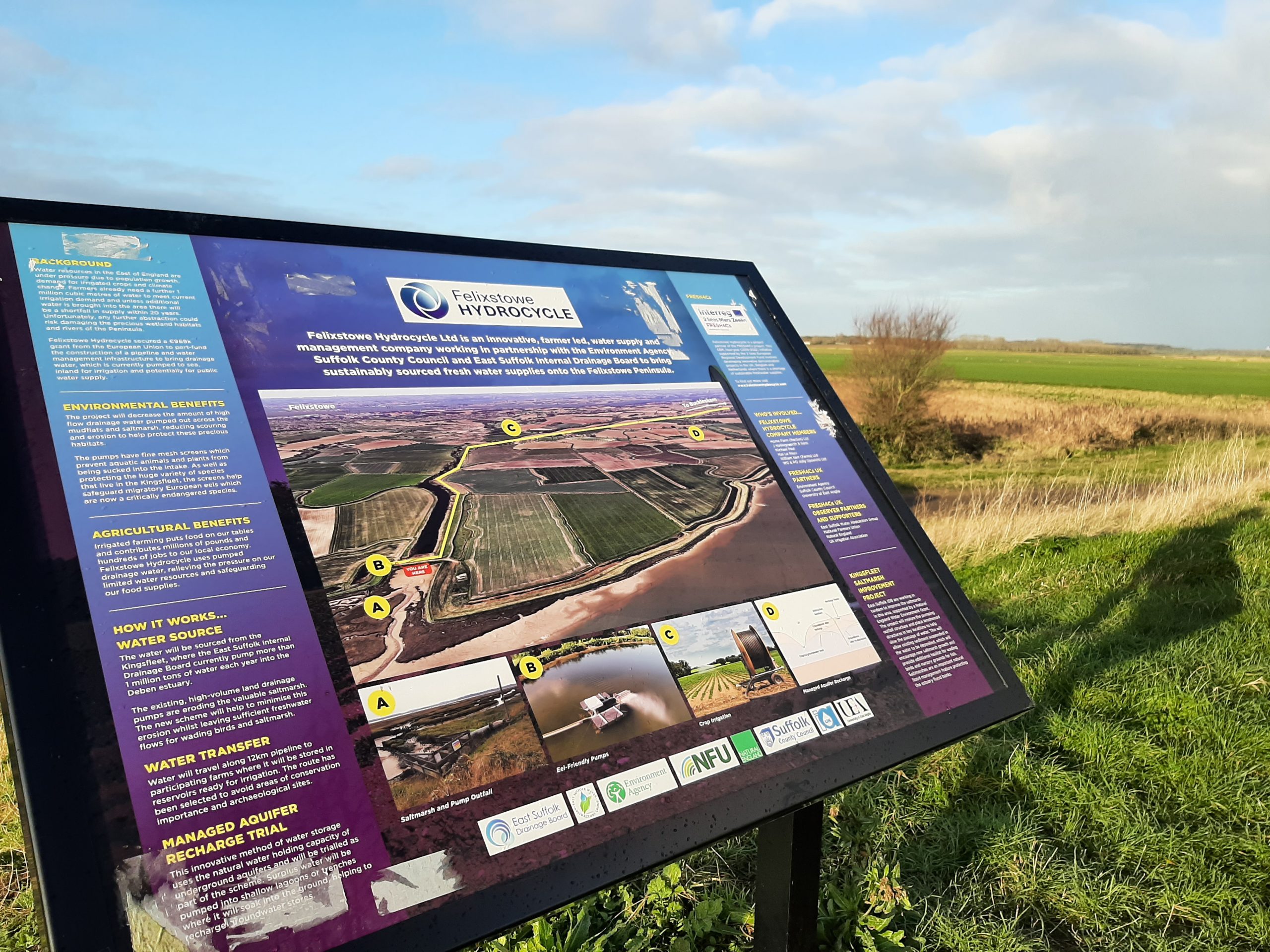
Some IDBs are investigating and participating in trials looking at capturing, storing more of the water that reach their pumping stations so that it can be recycled by local farmers and other water users. For instance the Felixstowe Hydrocycle is an innovative, farmer led, water supply and management company working in partnership with the Environment Agency, the Local Authority and East Suffolk IDB to bring sustainably sourced fresh water supplies onto the Felixstowe Peninsula.
IDBs in the Fens have highlighted that further work is needed around abstraction licencing, such as: avoiding overregulation of water transfer activities of IDBs that preserve the lowland water environment, better communicating and regulating voluntary and mandatory restrictions on abstractors, simplifying the process for licencing the storage of winter water by riparian owners, and incentivising the creation of more water storage facilities that are filled during the excess winter period. By storing water rather than pumping it out to main river, helps preserve water resources and reduce the cost to IDBs of pumping.
There are also examples where simple water control measures in ditches or at the end of field drainage pipes could be operated by farmers, in coordination with the local IDB, to retain more water in the ditch network and field soils for longer. Such measures urgently need to be available in packages of measures available to farmers under agri-environmental schemes as part of our efforts to tackle the impacts of climate change.
Finally, agronomists and farmers must be supported to take steps to better match agricultural land and the way crops are grown with the amount of water available. For example, in the Netherlands and at the University of Lincoln research is already being made into crops that can withstand saltier water better.
Ultimately, whilst IDBs can assist in controlling water levels to retain more water in times of drought in lowland England, they are working with a finite resource and we must all work together as organisations, companies, farmers, and residents to take steps to use water more economically, to limit the problems water scarcity can pose to our lives and the environment.
Ian Moodie
Technical Manager, ADA
July 2022
Archive
- November 2025
- October 2025
- July 2025
- June 2025
- March 2025
- February 2025
- January 2025
- December 2024
- November 2024
- October 2024
- September 2024
- August 2024
- July 2024
- June 2024
- May 2024
- April 2024
- March 2024
- January 2024
- December 2023
- November 2023
- October 2023
- September 2023
- August 2023
- July 2023
- June 2023
- May 2023
- April 2023
- March 2023
- February 2023
- January 2023
- December 2022
- September 2022
- August 2022
- July 2022
- June 2022
- May 2022
- April 2022
- March 2022
- February 2022
- January 2022
- December 2021
- November 2021
- September 2021
- July 2021
- May 2021
- March 2021
- February 2021
- January 2021
- December 2020
- November 2020
- October 2020
- September 2020
- August 2020
- July 2020
- May 2020
- April 2020
- March 2020
- February 2020
- January 2020
- December 2019
- November 2019
- October 2019
- September 2019
- August 2019
- July 2019
- June 2019
- May 2019
- April 2019
- March 2019
- February 2019
- January 2019
- December 2018
- November 2018
- October 2018
- September 2018
- August 2018
- July 2018
- June 2018
- May 2018
- April 2018
- March 2018
- February 2018
- January 2018
- December 2017
- November 2017
- October 2017
- September 2017
- August 2017
- July 2017
- June 2017
- May 2017
- April 2017
- March 2017
- February 2017
- January 2017
- October 2016
- September 2016
- August 2016
- July 2016
- June 2016
- May 2016
- April 2016
- March 2016
- January 2016
